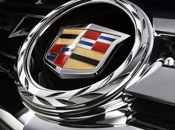How Much Does 1998 Cadillac Seville Insurance Cost?
Have you fallen victim to an underperforming, overpriced car insurance policy? Trust us when we tell you there are many people just like you. Companies like Progressive, Geico and Farmers Insurance increase brand awareness with TV and radio ads and it can be hard to see past the geckos and flying pigs and effectively compare rates to find the best deal.
You should take the time to price shop coverage at least once a year since insurance rates are usually higher with each renewal. Despite the fact that you may have had the best price on Seville insurance a year ago you may be paying too much now. Forget anything you know (or think you know) about car insurance because you’re about to find out the best way to buy cheaper car insurance.
The quickest method we recommend to get policy rate comparisons utilizes the fact almost all companies pay for the opportunity to give rate comparisons. All consumers are required to do is take a few minutes to give details like whether you are single or married, what you do for a living, any included safety features, and level of coverage desired. Those rating factors is instantly provided to multiple different insurance companies and they respond with quotes almost instantly.
What coverages do I need?
When buying the best car insurance coverage, there is no “best” method to buy coverage. Every insured’s situation is different so your insurance needs to address that. Here are some questions about coverages that might help in determining if your situation will benefit from professional help.
- Why am I be forced to buy a membership to get insurance from some companies?
- Can I get a multi-policy discount for packaging my home and auto coverage?
- Do I have coverage when pulling a U-Haul trailer?
- Is business equipment covered while in my vehicle?
- Does coverage extend to a rental car in a foreign country?
- When should I drop full coverage on my 1998 Cadillac Seville?
- How do I buy GAP insurance?
If you don’t know the answers to these questions but a few of them apply, you might consider talking to an agent. To find lower rates from a local agent, simply complete this short form or click here for a list of car insurance companies in your area. It is quick, free and can provide invaluable advice.
Coverages available on your auto insurance policy
Knowing the specifics of a auto insurance policy can help you determine the right coverages and proper limits and deductibles. Policy terminology can be confusing and even agents have difficulty translating policy wording. Below you’ll find typical coverages found on most auto insurance policies.
Uninsured/Underinsured Motorist (UM/UIM) – Your UM/UIM coverage protects you and your vehicle’s occupants from other drivers when they either are underinsured or have no liability coverage at all. Covered losses include injuries to you and your family as well as your vehicle’s damage.
Due to the fact that many drivers only carry the minimum required liability limits, it only takes a small accident to exceed their coverage. That’s why carrying high Uninsured/Underinsured Motorist coverage is very important. Most of the time the UM/UIM limits are identical to your policy’s liability coverage.
Coverage for liability – This provides protection from damages or injuries you inflict on other people or property by causing an accident. It protects you against other people’s claims. It does not cover damage sustained by your vehicle in an accident.
Split limit liability has three limits of coverage: per person bodily injury, per accident bodily injury, and a property damage limit. Your policy might show liability limits of 25/50/25 that translate to $25,000 bodily injury coverage, a limit of $50,000 in injury protection per accident, and a total limit of $25,000 for damage to vehicles and property. Alternatively, you may have a combined single limit or CSL which limits claims to one amount and claims can be made without the split limit restrictions.
Liability coverage protects against things such as loss of income, pain and suffering, repair costs for stationary objects and attorney fees. The amount of liability coverage you purchase is up to you, but you should buy as much as you can afford.
Collision coverage – Collision coverage pays for damage to your Seville from colliding with another car or object. You have to pay a deductible then the remaining damage will be paid by your insurance company.
Collision insurance covers claims like hitting a parking meter, backing into a parked car, hitting a mailbox and damaging your car on a curb. Paying for collision coverage can be pricey, so consider removing coverage from vehicles that are 8 years or older. You can also raise the deductible to save money on collision insurance.
Comprehensive insurance – Comprehensive insurance will pay to fix damage that is not covered by collision coverage. You first have to pay a deductible and the remainder of the damage will be paid by comprehensive coverage.
Comprehensive insurance covers claims such as damage from flooding, a tree branch falling on your vehicle, falling objects, hail damage and damage from a tornado or hurricane. The most you can receive from a comprehensive claim is the actual cash value, so if the vehicle is not worth much it’s not worth carrying full coverage.
Med pay and Personal Injury Protection (PIP) – Med pay and PIP coverage kick in for short-term medical expenses for chiropractic care, surgery and EMT expenses. They are often used to fill the gap from your health insurance program or if you do not have health coverage. Coverage applies to you and your occupants and will also cover if you are hit as a while walking down the street. PIP coverage is not available in all states and gives slightly broader coverage than med pay

